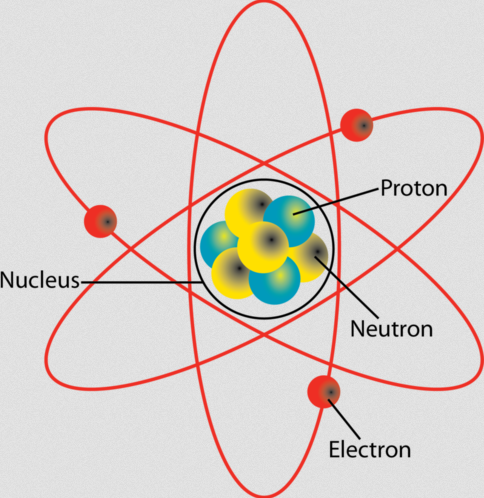Tiny Particles
You may be familiar with the periodic table. All matter can be broken down into these basic elements.
![The Periodic Table of Elements. (By 2012rc (self-made using inkscape) [Public domain], via Wikimedia Commons) Periodic_Table](/files/resize/members/kate-miller/images/periodic_table-500x275.png)
We used to think that matter couldn’t be broken down further…until we realized that an atom is really made up of protons, neutrons and electrons.

We used to think that matter couldn’t be broken down further…until we realized that there are even smaller particles. We’ve organized those particles into quarks, leptons, and bosons.
![The Standard Model of Elementary Particles. (By MissMJ [CC BY 3.0 (http://creativecommons.org/licenses/by/3.0) or Public domain], via Wikimedia Commons) Particles](/files/resize/members/kate-miller/images/particles-500x374.png)
You can think of each particle as having its own personality. An electron keeps busy bonding with other particles, Up Quark and Down Quark are friends forever, and photons can light up the room.
What is the neutrino’s personality? I like to think of neutrinos as the ninjas of the particle world. A neutrino is very stealthy and nearly invisible. In fact, there are about 65 billion solar neutrinos passing through the area of your thumbnail every second!
Theoretical Beginnings
In 1930, Wolfgang Pauli (you may have heard of him from the Pauli Exclusion Principle) looked closely at nuclear decay.
He noticed that when a neutron decays into a proton and an electron, conservation of energy and conservation of momentum don’t hold true. Well, we believe that can’t be so – we believe conservation of energy ALWAYS holds true and conservation of momentum ALWAYS holds true. So what gives?
Pauli predicted that there must be another particle. Something that could restore conservation of energy and conservation of momentum. He (essentially) wrote:
Neutron → proton + electron + something else
That something else he called a neutrino.
At that point in time, the neutrino was purely theoretical – something Pauli thought existed but hadn’t yet seen in an experiment. In fact, Pauli himself didn’t think it could be seen.

So what makes neutrinos practically invisible?
(Nearly) Massless
You, your desk, your chair, everything around you has mass. Because that mass is in Earth’s gravitational field, it feels a gravitational force pulling it down. This is why you can’t magically float out of your seat (without the help of your imagination).
Neutrinos are different. Neutrinos have nearly NO mass (technically they do have a little mass and there are other experiments trying to figure out exactly how much). That means that Earth’s gravitational field won’t noticeably affect them. A neutrino won’t be pulled down like you are! In fact, no gravitational field will noticeably affect the neutrino – not the sun’s or another star’s or…anything (except black holes, but that’s for a different day)! It passes right through!
Chargeless
You may already know that a proton has a positive charge and an electron has a negative charge. Neutrinos, again, are different – they don’t have ANY charge!
This means that if a neutrino passes through a magnetic field or an electric field, it again won’t be affected. It’ll just pass right through!
See why the neutrino is like a ninja? No gravitational field, magnetic field or electric field will noticeably affect it. It stealthily slips by.
Good News and Bad News
This is all good news in a way. If we can detect a neutrino, all we have to do is trace a straight line back to find out where (and what) it came from. The neutrino took no curves or turns along the way, so it’s easier to tell if it came from a gamma ray burst or a star going supernova or an active galactic nucleus.
The bad news is, how do you find a particle that’s pretty much invisible? Ninjas are hard to catch after all! What do you think? I’ll reveal more about how we detect neutrinos in my next journal.


Comments